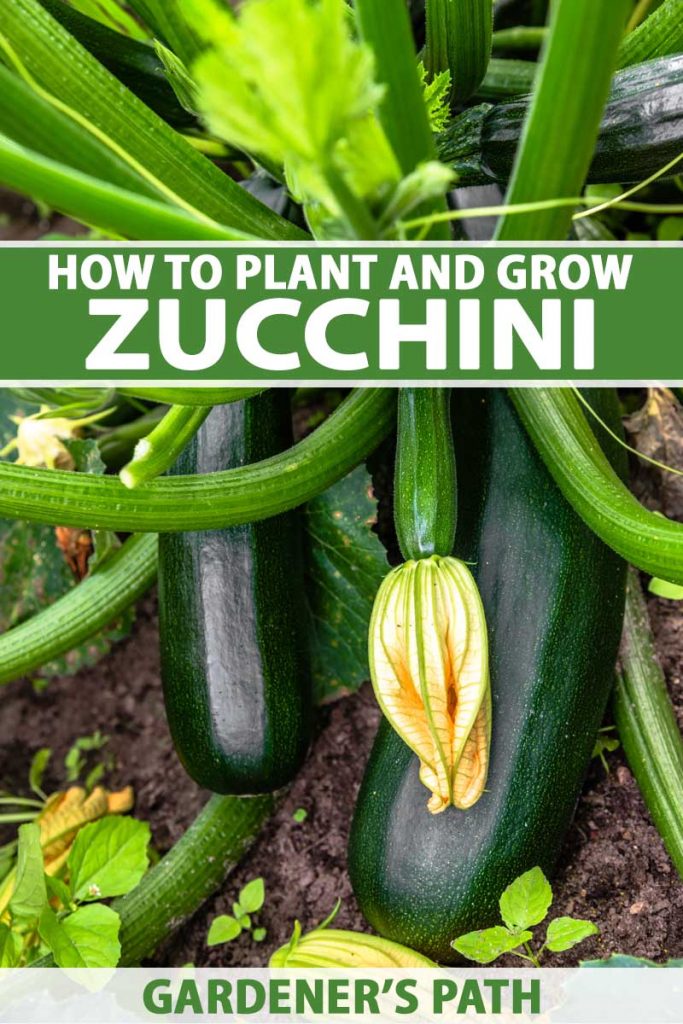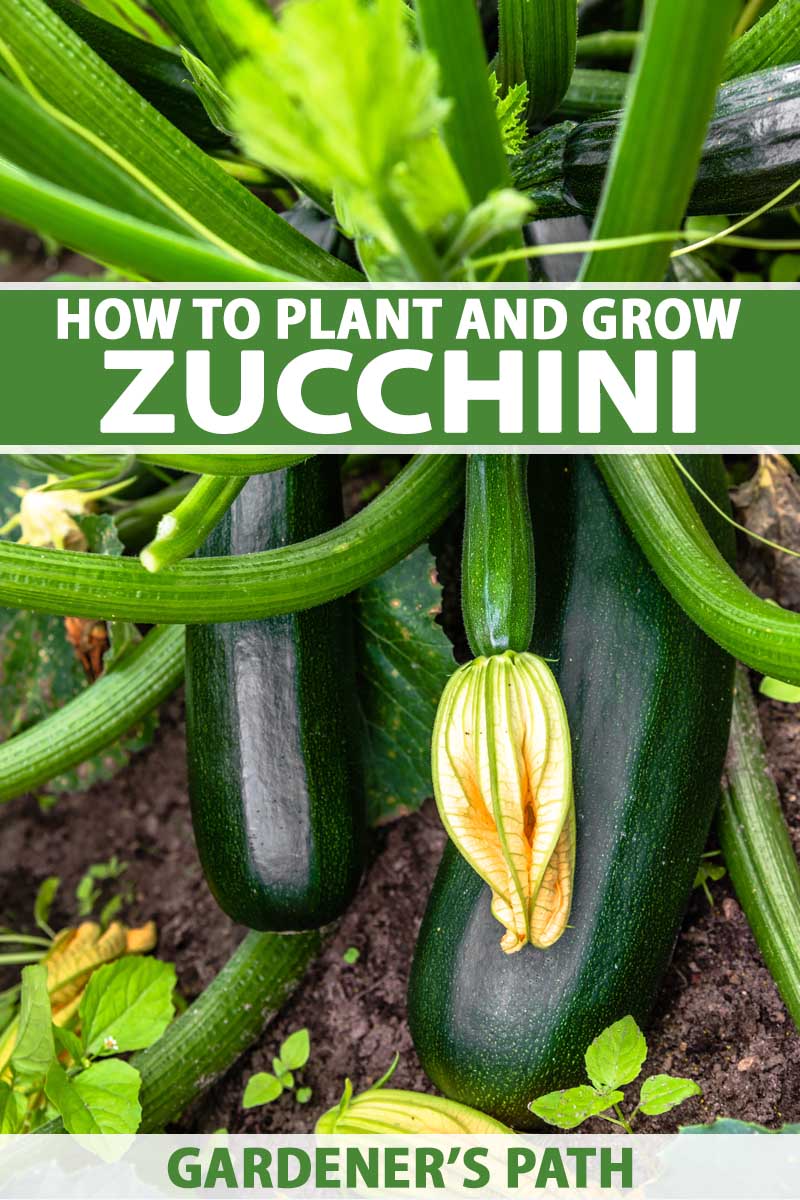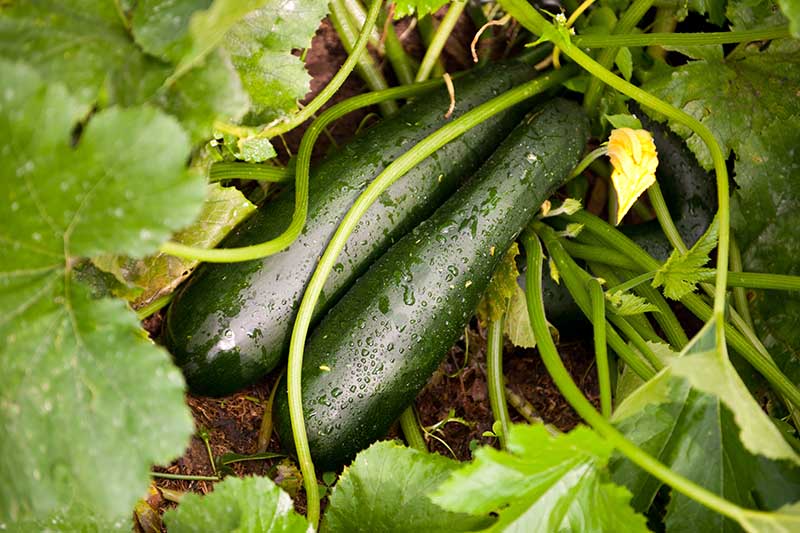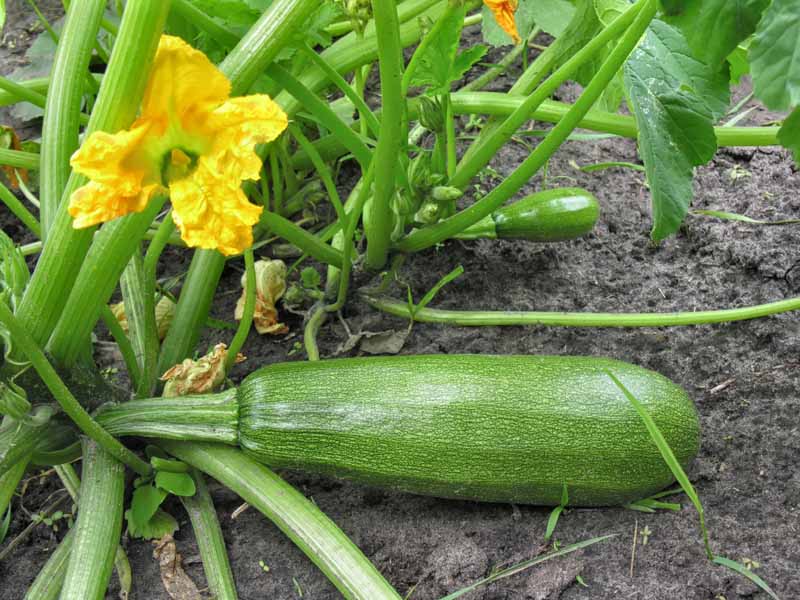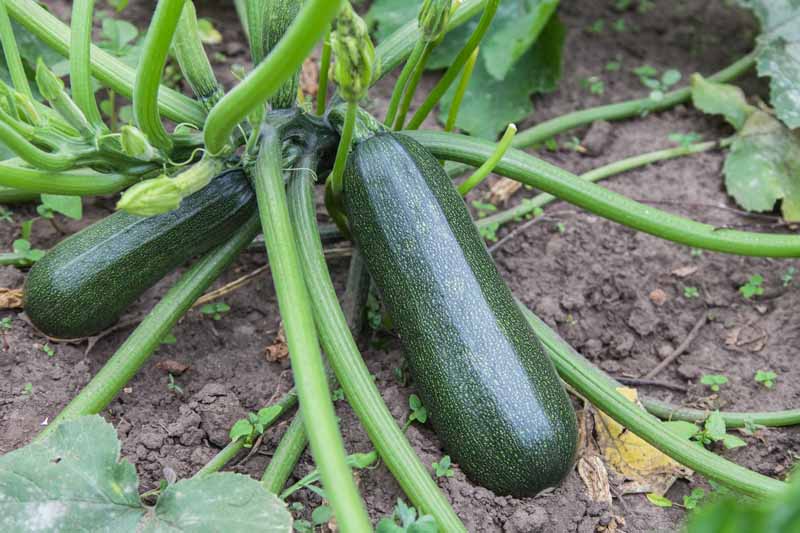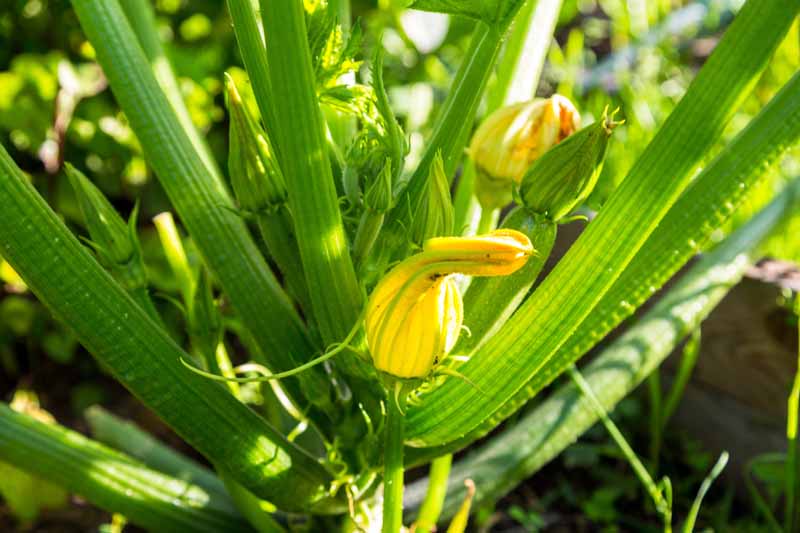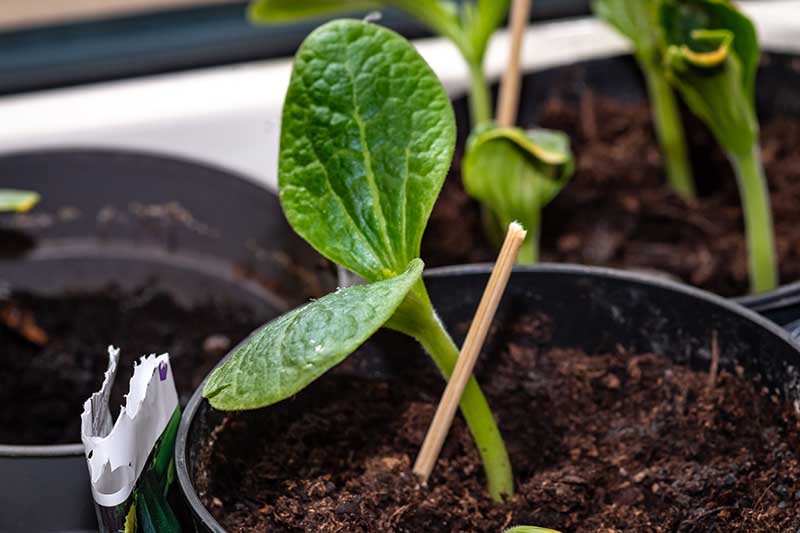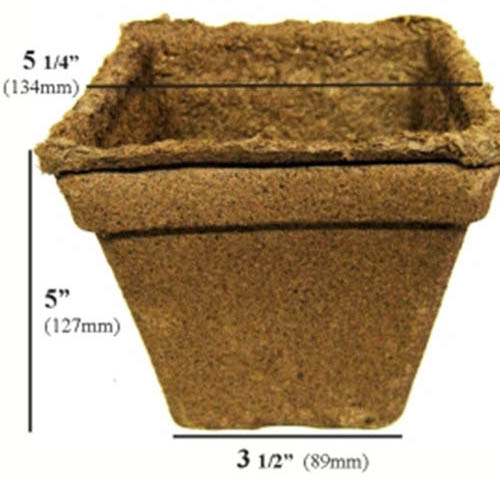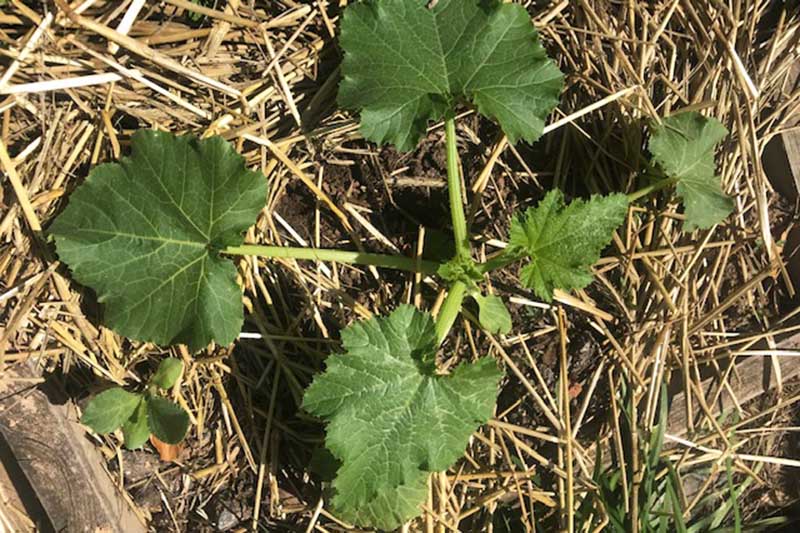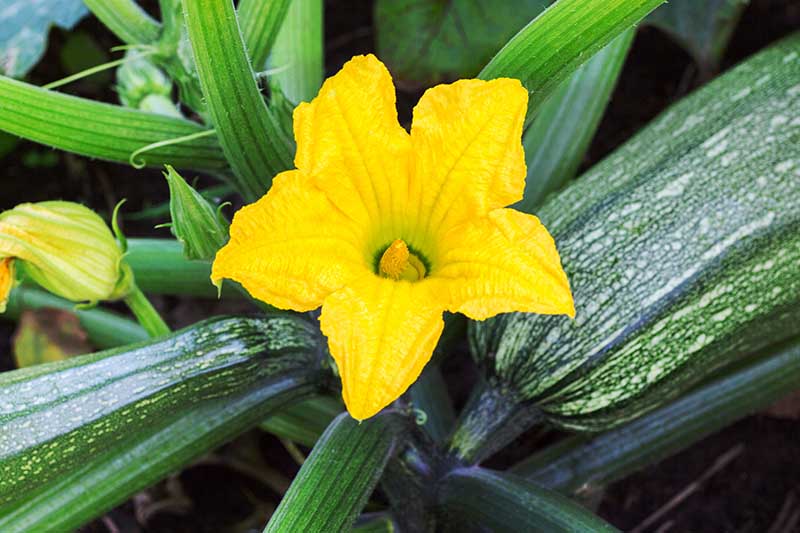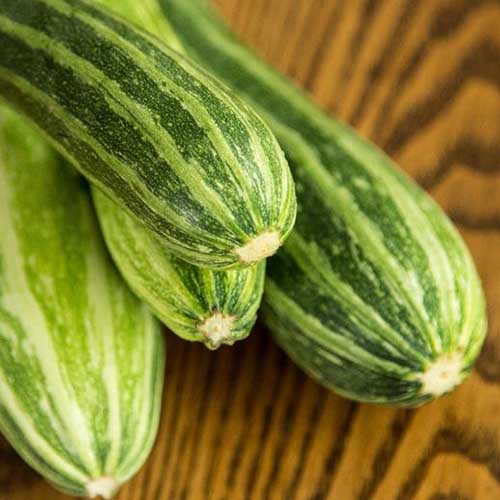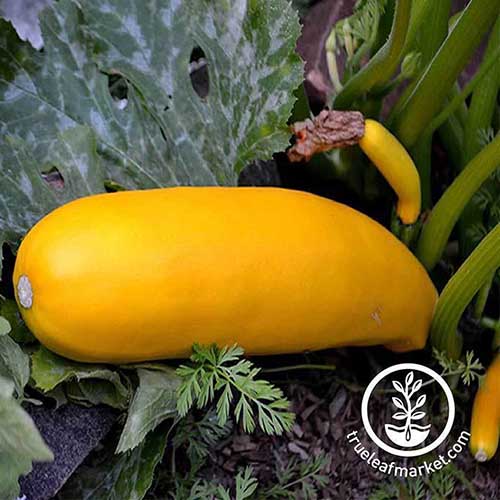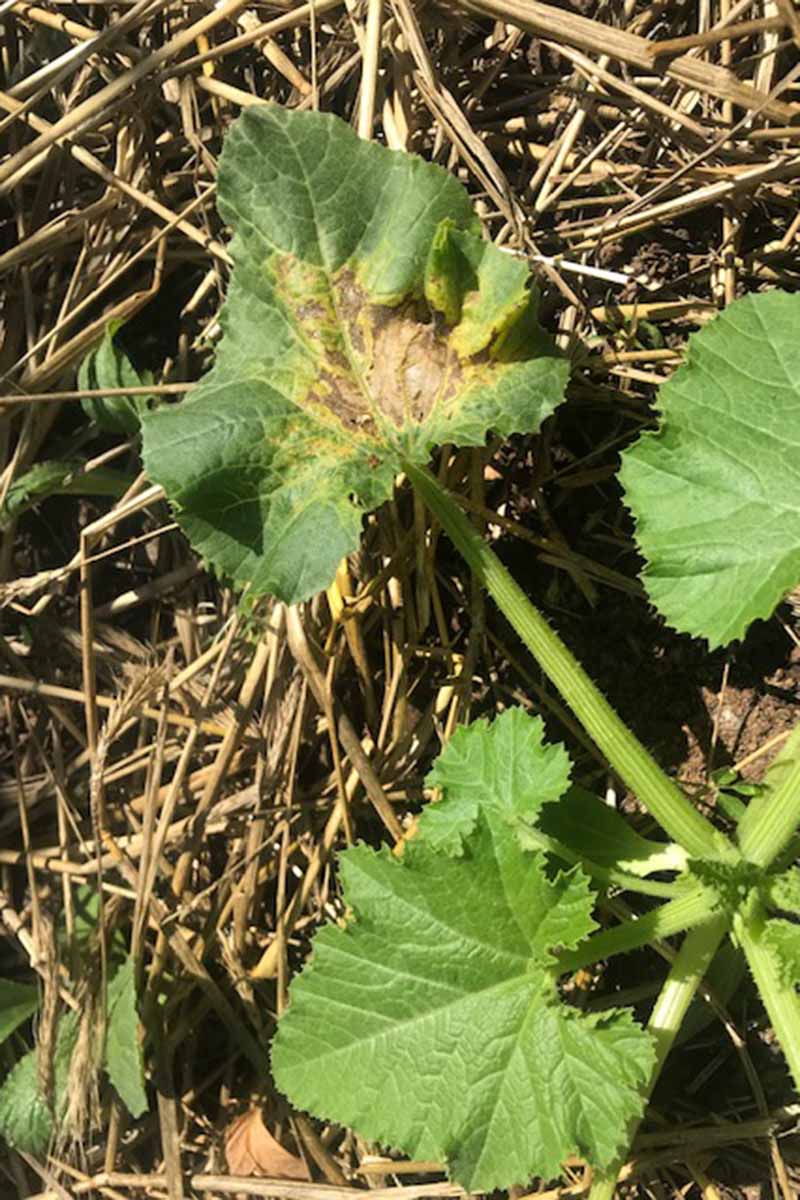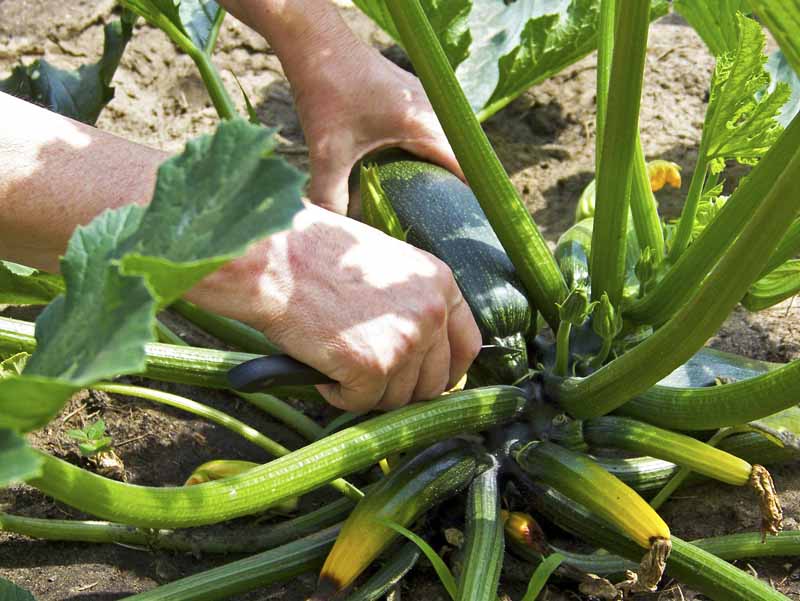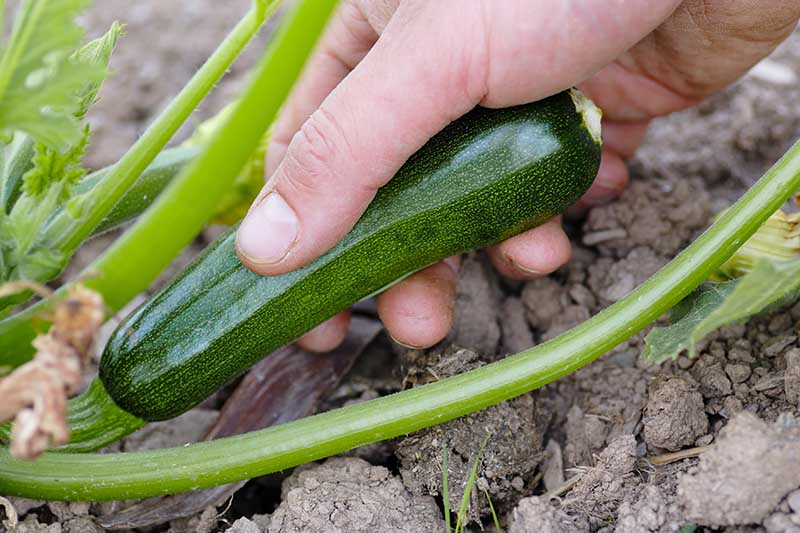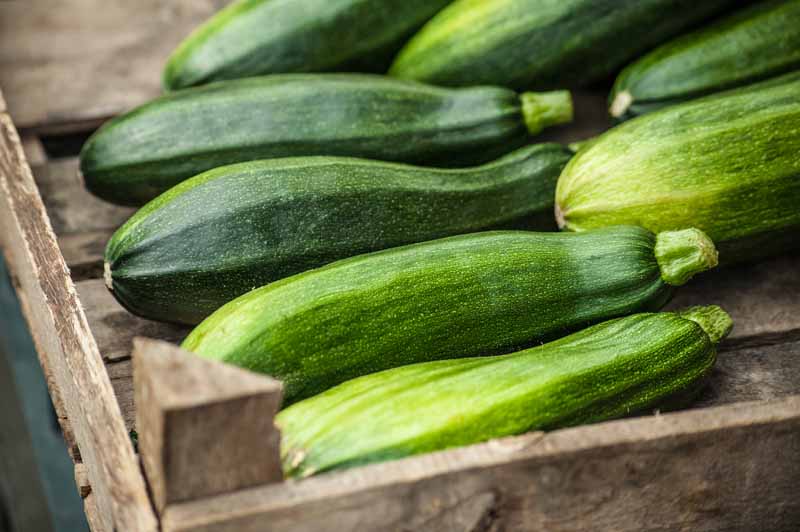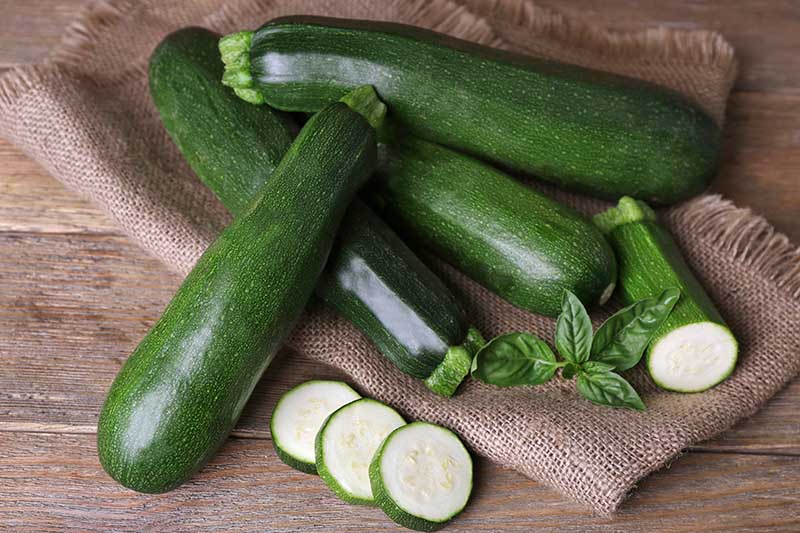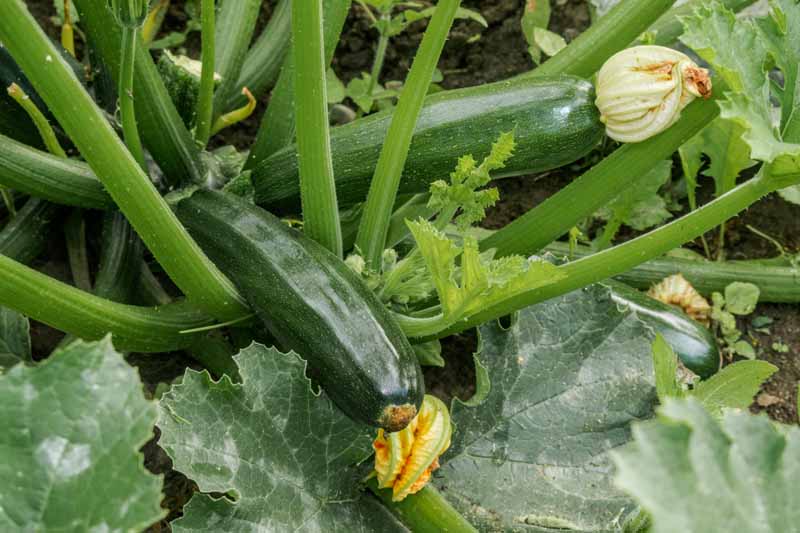This variety of summer squash has a few non-negotiable requirements, sure. But if you meet its soil fertility, sun, and water demands, it will usually reward you with an abundance of produce in a short time, with little effort from you. The main drawback – if you can call it a drawback – is that these overachievers may exhaust you with the need to keep up with their output. We link to vendors to help you find relevant products. If you buy from one of our links, we may earn a commission. Something in your life that’s too generous, that gives back continuously after a minimal investment of work and resources on your part? Personally, I think everyone needs more of that.
Whether you’re a home pickling fan like me, adore sautes and zoodles (or “courgetti,” across the Pond), or are just enthusiastic about a plant that’s easygoing, zucchini is an easy choice. But you still have to make lots of decisions as you plant and grow, and this is what I’ll cover to help you make them: Like its summer squash relatives, zucchini is a member of the Cucurbitaceae family, which includes gourds, cucumbers, and pumpkins. When the fruits are young, usually 7 inches or shorter, they can be eaten rind and all.
More mature fruits must be peeled and grated before being disguised in other dishes, like zucchini bread. Because I am a friend, I will nag you by repeatedly offering this advice: don’t let zucchini get too big! While you can always use the younger pickings in all recipes, even ones that require grating, the clublike overgrown fruits are only good for very limited things, or to feed to grateful chickens or petting zoo animals. It’s fine if you want to let a few of them get big, but concentrate on producing the smaller, tender squashes that are creamy and sublime in stir fries and summer soups, or breaded and pan-fried.
Zucchini are cylindrical. While they may taper a bit, like the ‘Grey Zucchini,’ they don’t have a neck, or any sort of handle, unlike crookneck squash. They are renowned for loving heat and being easy to grow, thriving in USDA Hardiness Zones 3-9. Those jokes about people leaving extra bushels on their beleaguered neighbors’ porches after dark because no one wanted yet more? Well, I’ll agree that these cucurbits do produce an amazing amount. And I’ll laugh at the jokes. But I have to say, anyone who wouldn’t want a zucchini bounty on hand just doesn’t know a good thing when they see it.
Cultivation and History
Also known as “courgettes,” these squash are relative newcomers both to the culinary and the gardening world. Their ancestors come from Mexico, maybe as far back as 7,000 years ago.
There are currently eight different horticultural groups of summer squash: cocozelle, crookneck, scallop, straightneck, vegetable marrow, and zucchini. The zucchini itself first emerged in Italian agriculture and cuisine. According to research published in the July 2016 issue of Annals of Botany, they are the newest cultivar member of the C. pepo species. That particular study unearthed a Tuscan word “zucchini” dating to the 1840s, and a concurrent “Zucchini Group” within C. pepo that originated in the Milan region, sometime around 1850. Today, this summer squash is grown in many temperate climates and has inspired cuisine in countries including Turkey, Japan, India, and the US.
How to Grow
Like most home buyers, zucchini are all about “location, location, location.” It’s not that they’re picky. But they do need organically-rich, fertile soil amended with aged manure or compost, and ample space between plants to avoid mold on the soil or moisture-related pests and diseases.
It’s best to avoid planting your zucchini in soil that has previously been used to grow other cucurbits, to reduce the risk of soil-borne disease. Their preferred pH is a little on the acidic side, but they’ll thrive in any soil with a pH between 6.0 and 7.5. They require a full sun location, too. If you’ve chosen a vining cultivar, make sure it has ample support. Pound the stakes or trellis in about 4 inches from where you plant the seeds, and do it when you plant. That way, you won’t disturb the roots, leaves, or fruit as you will if you wait until later in the season. Wait until the nighttime temperatures are reliably above 55°F before direct planting in the garden. Then follow the sowing instructions from our handy guide to planting seeds. You’ll need to allow two feet between plants, in rows spaced three feet apart. I’ve had the best luck with getting an early jump using biodegradable pots, like the CowPots™ formed from dried cow manure and sold by Arbico Organics. The manure decomposes in the garden after you plant the seedlings, still in their little pots. This method prevents you from disturbing the roots during transplant. Be sure to apply a layer of mulch around the plants once they’ve formed two sets of true leaves. You can use straw, paper, or even plastic mulch to help the plants retain that all-important moisture, and to discourage weeds that will compete for water and nutrition. Leave at least a couple of inches between the main stem of each plant and the mulch, to discourage mulch-borne bacteria from contacting the plant. Plants require 1-2 inches of water per week, and thrive in soil that is kept consistently moist but not waterlogged. Use a soaker hose or drip irrigation to avoid too much moisture on the leaves, as this can encourage the spread of disease. And what about fertilizer? If you amended your soil with compost at the time of planting, you may not need to fertilize your plants at all during the growing season. However, you can apply an all-purpose, balanced liquid fertilizer diluted to 50 percent strength at bloom time. Find more tips on fertilizing zucchini plants here.
If you’re planning to go on vacation for a week or two in the summer, make sure to time your planting to accommodate the days you’ll be gone. Don’t plant a variety that will mature during your vacation, or you won’t be around to pick the produce when it reaches the right size. No one wants to come home to a garden full of baseball-bat-sized zucchini! For more information, check out our guide to planting and growing summer squash.
Growing Tips
Choose a full sun location Plant in organically-rich, fertile soil Keep soil evenly moist but not waterlogged
Cultivars to Select
There are a number of zucchini cultivars available, including some compact varieties ideal for growing in containers. While you can cut down the potential for disease by providing enough space between plants for ventilation, and raising the strongest plants possible, you may want to increase your odds by also growing a highly disease-resistant hybrid, such as ‘Justice III.’
Bossa Nova
One of my personal favorites is the 2015 All America Selections Winner ‘Bossa Nova,’ which is ready to harvest in just 37-42 days. ‘Bossa Nova’ This hybrid cultivar has creamy flesh and small seeds, and is best picked when fruits are 4 or 5 inches long.
Cocozelle
The heirloom cultivar ‘Cocozelle,’ is a bush variety. It’s lightly striped with white, and takes as little as 45 days to mature from planting to harvest.
‘Cocozelle’ You can find seeds available from Eden Brothers.
Lungo Bianco
If you’re intent on cooking some of those wonderful stuffed squash recipes, for example, you may want to grow one of the varieties with a larger cavity, like the pale green, mild ‘Lungo Bianco.’
‘Lungo Bianco’ This heirloom cultivar has a compact, bush type growth habit, and is ready to harvest in 70 days. Fruits are between six and eight inches long. You can find seeds in a variety of packet sizes available from Eden Brothers.
Other gardeners like the look of golden cultivars. They’re about the same color as crookneck yellow squash, or sometimes a bit darker yellow, but tend to have smaller seeds and are usually firmer – ideal for grilling or stir fries. They also contain less water than crooknecks or other yellow summer squash, ideal if you want to make yellow spiralized veggie noodles (and really, who wouldn’t?).
Zucchini Golden
The heirloom ‘Zucchini Golden’ is a bush variety, with 6- to 8-inch-long, bright golden-yellow fruits.
‘Zucchini Golden’ This variety is ready to harvest in just 55 days. You can find seeds in a variety of packet sizes available from True Leaf Market. There are also solid choices available for gardeners with problem growing areas. Read more about growing golden zucchini here.
Managing Pests and Disease
Zucchini are easy to grow, but they can succumb to certain pests and diseases if you’re not careful. Our guide to common zucchini pests will help you formulate strategies for coping with common issues with pests such as squash vine borers, squash bugs, whiteflies, and cucumber beetles. And we detail further strategies for protecting you plants here. You can learn all about how to prevent and treat zucchini diseases, including blossom end rot, mold, and powdery mildew in this guide. I’ll also add another tactic that’s worked well for me here in the oppressively sunny, humid midsummer in the southern US: make every effort to start your plants as quickly as possible and grow strong, healthy plants. A little extra attentive care can go far in the quest to get a good harvest. They’ll be quick to produce in warmer climes, and well established by the time such pests as vine borers make their appearance if you get an early start. This strategy of already having the harvest underway by the time you spot bug eggs on the leaves means you’ll have at least a few zukes to enjoy, even if your plants are ultimately decimated by those pesky – and frankly, icky – bugs.
Harvesting
I hate to take a gleam out of any rookie gardener’s eye. But it must be said, and I’ll say it: zucchini are best harvested when they’re firm, glossy, and somewhere between 4 and 6 inches long.
At that age, they’re creamy, the seeds are so small you won’t notice them, and all your foodie friends will want some for sauteing and spiralizing. Once they’ve gotten bigger, say the size of a small child’s forearm, you can still eat them. But they’ll be mealy, not succulent, and you’ll most likely have to peel them and scrape the seeds out of the center. While you can use this too-mature produce in muffins or pancake batter, the fresher, smaller summer squash are just as good for this purpose, and they won’t release as much water, either. To cut from the vine, whether it’s overgrown or just perfect, use a sharp paring knife from the kitchen, or clean pruners. To keep them stay fresh and firm longer, leave an inch of the stem attached when you lop the squash off the vine.
If you harvest regularly, the plant will keep producing. On average, you can expect about 8 pounds of fruit from each transplant over the course of the growing season. The harvested fruit can usually sit on the counter in a cool, dry place without harm for a couple of days. Don’t wash or cut into it until you’re ready to cook or eat it. A day or two in the refrigerator can really dry it out.
Preserving
To stock up so you’ll have a taste of summer available to enjoy later in the year, you can go old-school, or be super creative.
One method I absolutely swear by is pickling extra zucchini. You can make refrigerator pickles, or even hot water bath dill pickles. The best way to save summer squash to add to soups or batters is to freeze it. After washing, grate it by hand with a box grater, or use the shredding disk on your food processor. Let it rest in a colander in the sink for 15 minutes, so some of the moisture runs out. Then place parchment or wax paper on a cookie sheet. Pile mounds of the shreds on the paper by the cupful, and freeze. When they’re frozen hard, stack the mounds in a jar or freezer container, separated by the paper sheets. Add them to boiling soups or stews directly, without thawing. Mix the vegetables together in a bowl with clean hands. Then add either bottled or homemade Italian vinaigrette (from a recipe or a store-bought product that includes olive or vegetable oil). I use 1/2 cup of dressing per two cups of chopped vegetables. Dinner’s In the Freezer: A Second Helping Basically, you cut the stem off fresh, clean, dry zucchini, and then cut them into 1-inch chunks. If you have bell pepper or yellow storage onions on hand, do the same with equal portions of each of them. Stir to coat the vegetables, and then portion out the mixture into freezer bags in whatever quantity you’re most likely to use when you make a meal. Squeeze the air out, and then lay the bags flat and smooth the contents.
Lay them flat on a cookie sheet and freeze. When they’re frozen hard, remove the cookie sheet and stack the bags for freezer storage. Later in the year, you can thaw the vegetables overnight in the refrigerator and then grill or roast them, with or without additional marinades or oils. I’ve also steamed them unthawed in a couple of teaspoons of water over medium-high heat. I like them crispy, so I stop steaming after just two minutes, but you can tweak to your liking. You can also use your oven or a dehydrator to make zucchini chips. Wash, cut into thin slices, and add your choice of seasoning. Dehydrate until crispy, and store in an airtight container in a cool, dark place.
Recipes and Cooking Ideas
If you’ve never had the pleasure of picking a courgette straight out of the garden, you are in for a treat! You may be surprised at how great it tastes, just chopped and steamed with some fresh herbs, and a wee bit of butter to make them even more succulent. Or for something a little more indulgent, try this fried zucchini with citrus sauce recipe, from our sister site, Foodal. For your first days of eating the fruits of your (not particularly extensive) labor, I’d stick with simple sautes, perhaps with a touch of sesame oil or a splash of your favorite stir-fry sauce.
Quick Reference Growing Guide
Share the Zucchini Love
If you’ve followed all these tips and given your overachieving plants an extra dose of TLC all season, you may end up with an overabundance of summer squash. It may be more than you expected, but never more than you can handle! Make sure to share the bounty, whether with foodie friends and neighbors or the local food bank.
And I know I mentioned this already, but it’s extra-kind to make sure you harvest while those tasty morsels are still firm and of the ideal size, especially if you’re going to pass your produce along to others. If you do let them get too huge, don’t despair! Make a few phone calls and see if your area’s petting zoo or nature center wouldn’t love to feed those oversize zucchini to the enthusiastic animals. Friends who raise hens, especially those in urban areas, will welcome your excess, too, so don’t let it go to waste. Be sure to share any and all growing and cooking ideas, or questions about this abundant summer squash variety, in the comments section below. And for more information about growing zucchini in your garden, check out the following guides next:
Problems with Growing Zucchini: Troubleshooting 11 Potential Issues Why Zucchini Blossoms Drop and What to Do About It When and How to Prune Zucchini Plants How to Protect Zucchini from Frost
Photos by Meghan Yager and Rose Kennedy © Ask the Experts, LLC. ALL RIGHTS RESERVED. See our TOS for more details. Product photos via Arbico Organics, Eden Brothers, Park Seeds, Revell, and True Leaf Market. Uncredited photos: Shutterstock. With additional writing and editing by Clare Groom and Allison Sidhu.

